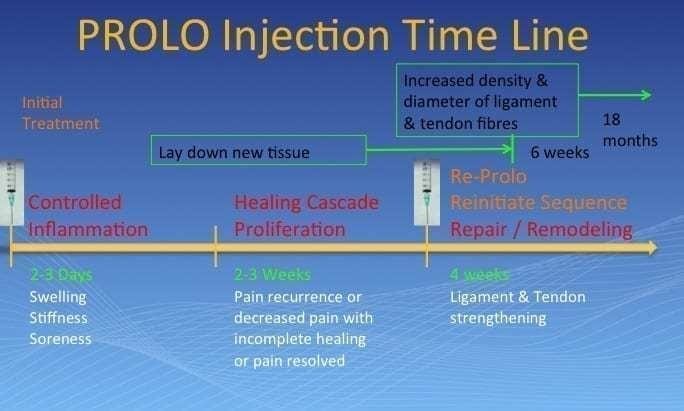NEURAL THERAPY
Neural Therapy has been in wide use in Europe since the 1940’s. Since that time it has been taught and practiced safely around the world with great success and minimal negative effects. It is very effective in treating a wide variety of conditions by using injections into nerve sites, acupuncture points, scars, muscle trigger points and other tissues to relieve pain and dysfunction throughout the body.
NEURAL MEANS NERVES
Nerves need to flow freely for optimal body function to occur. The autonomic nervous system unconsciously controls all body functions such as heart rate, digestion, perspiration, breathing, blood flow and just about anything else that occurs without your conscious direction. When nerve flow is interfered with, then the nervous system regulation of connected body parts is compromised. This compromise can result in poor function, pain, disability and disease. The purpose of neural therapy is to unblock the interference to normal functioning by using very specific injections into the areas of disturbance. The injections contain sterile homeopathic medicines and/or a local anesthetic such as procaine. The sites of injection are determined by your history of trauma and surgery, location of symptoms, autonomic patterns or through applied kinesiology methods.
COMMON CONDITIONS TREATED WITH NEURAL THERAPY:
- Back and neck pain,
- Posttraumatic conditions,
- Chronic pain from whiplash and head injury,
- Joint pain, muscle pain, and athletic injuries.
- Jaw and head pain,
- Post-surgical pain (including dental),
- Digestive disturbances
- Sinusitis,
- Hypothyroid
- Muscle injuries
- Organ dysfunctions
- Scar tissue wounds (old and new)
SCARS
Scar tissue is a common cause of disturbance fields and any scar whether a small one from a childhood fall, from dental surgery or a major post-surgical scar will set up interference. A scar has an electric charge about five times that of normal skin and can disrupt nerve flow. Scars that cross acupuncture meridian channels can block energy to those related organs and body parts.
A scar will hold injured or cut fascia, muscles and skin together, but it is not as flexible as the original tissue, so the underlying tissues cannot move as freely. George Goodheart D.C. uses the following analogy: “If someone pulls down hard on the left side of the shirt you are wearing, it makes it more difficult for you to raise your left arm. Treating your left arm would do little to relieve the decreased range of motion of your arm as long as the tension is exerted on your shirt. Loosening the tension on your shirt hem, however, does effectively produce a marked increase in the range of motion of your left arm because you are getting to the cause of your problem and fixing it.”
The treatment of scars with neural therapy, even decades old ones, has consistently been an important factor in increasing mobility, reducing pain and improving movement and function.
PROLOTHERAPY
WHAT IS PROLOTHERAPY?
Prolotherapy is the injection of a proliferating agent into injured tendon or ligament attachment site (bone or joint), to stimulate the body’s natural healing process. Prolotherapy is also known as “nonsurgical ligament reconstruction.” The word “prolo” is short for proliferation – as prolotherapy treatment enhances the growth and formation of new ligaments, tendons and cartilage in areas where there is weakness, laxity or excess scar tissue.
HOW DOES IT WORK?
The initial reaction of treatment is localized inflammation, triggering a wound-healing cascade leading to increased blood supply and flow of nutrients and growth factors. This stimulates the tissue to repair itself by deposition of new collagen, the material that ligaments and tendons are made of. The new collagen then shrinks as it matures, leading to ligament/tendon tightening and increased strength.
WHAT SOLUTION IS INJECTED?
Prolotherapy uses a specialized dextrose (sugar) solution in addition to procaine. The dextrose makes the solution more concentrated than blood, acting as a strong proliferant. Procaine is an anesthetic that helps reinforce the diagnosis because the patient may experience immediate pain relief after the injection. Other injectables may be added, such as Vitamin B12, human growth hormone, or other stimulating phytochemicals.
HOW MANY TREATMENTS ARE NEEDED?
The response to treatment varies with each patient and the extent of trauma to the ligament, tendon or cartilage, as well as individual rates of healing.
Most patients need an average of 3-6 treatments per area with proper nutrition and rests between visits. Others may require 6-10 treatments, depending on the extent of their injuries. Once treatment begins, we can better assess how you are responding.
Wound strength studies show that it takes 6-12 months for maximum tensile strength to occur without prolotherapy resulting in only 60% of the original strength. With a treatment every 2 weeks, prolotherapy healing can occur in 1-2 months.
Prolotherapy differs from steroid injections. Steroids produce temporary pain relief and inhibit inflammation (the body’s natural healing mechanism). In the long run, steroids cause tissue degeneration and multiple adverse effects. Prolotherapy does just the opposite with minimal side effects.
PAIN CONDITIONS BENEFITED BY PROLOTHERAPY
- Musculoskeletal Injury – New or Old!
- Athletic injuries: ligament & tendon injuries, sprains, strains, tears
- Overuse injuries: golfer’s elbow, tennis elbow, shoulder tendinitis & rotator cuff, achilles tendinitis, plantar fasciitis, carpal tunnel
- Low back pain: musculoskeletal tension, sciatica, arthritis, herniated and degenerative discs
- Arthritis pain: back, hip, knees, shoulders, hands, wrists, feet
- Sacroiliac (SI) joint disorders
- Weak, loose, unstable joints: hypermobility, subluxations, nerve impingement
- Whiplash injuries: neck, upper back, shoulders, low back
- AND MORE…
“ The ligament and tendon tissue which forms as a result of Prolotherapy is thicker and stronger than normal tissue – up to 40% stronger in some cases.”

PLATELET RICH PLASMA (PRP) THERAPY – A LEADING NON-SURGICAL TREATMENT FOR JOINT AND TENDON INJURIES
Platelet rich plasma (PRP) is an all-natural form of therapy that helps speed healing of chronic injuries by harnessing your body’s intuitive regenerative capacity.
PRP is the first approach of treatment in the emerging field of regenerative medicine. Research and medical evidence has grown in recent years to support its usage as a treatment for a wide range of joint and muscle injuries. PRP is both innovative and natural as it uses your body’s own blood platelets to promote the healing of chronic joint, tendon and muscle injuries – problems that were previously limited in treatment in conventional medicine with rest and ice.
PRP is a popular choice for elite athletes (such as pro golfer Tiger Woods) seeking treatment for osteoarthritis, tendonitis and other muscle and tendon injuries.
WHAT IS PRP AND HOW DOES IT WORK?
Platelet Rich Plasma or PRP is blood plasma with concentrated platelets. The concentrated platelets found in PRP include growth factors among the huge reservoirs of bioactive proteins critical in initiating and accelerating tissue repair and regeneration. These proteins increase stem cell production to initiate connective tissue healing, bone regeneration and repair, promote development of new blood vessels and stimulate the wound healing process. By injecting plasma containing concentrated platelets from your own bloodstream directly to the site of your injury, a cascading healing reaction is triggered. What’s more, this healing is effective even in areas of the body that do not normally receive adequate blood flow, such as the interior of your joints and tendons. Most patients find the procedure to be relatively painless, and the entire treatment takes about an hour.
HOW MANY TREATMENTS ARE NEEDED?
Response rates to PRP usually exceed Prolotherapy injections. While treatment varies with each patient and the extent of trauma to the ligament, tendon or cartilage, full benefits and healing can be seen in a s little as 1-2 treatments and on average 2-3 treatments.
BENEFITS OF PRP
PRP healing effects have been proven to:
- Outlast conventional therapies, like cortisone or hyaluronic acid injections.
- Not only does it relieve pain; it actually helps to heal the underlying issue, with noticeable, long-term benefits within six months.
- Platelet rich plasma has no known negative side effects, (as it comes from your own body!)
- Healing benefits can be increased with additional treatments, such as neural therapy, cold laser therapy, massage, etc., although they’re not necessarily required.
Clinical studies show that PRP results in significant improvements, statistically and clinically including a reduction or resolution of pain, improved physical function and reduced stiffness. Multiple studies support this specifically for knee injuries. Some studies indicate that improvements can occur within six weeks of the first injection.
IS PRP RIGHT FOR YOU?
You may want to consider a PRP treatment if you’re experiencing:
- Mild to moderate osteoarthritis (in most joints, but especially the knees, hips or shoulders)
- Lateral and medial epicondylitis (tennis and golfer’s elbow)
- Rotator cuff tendonitis or partial tears
- Any other common tendon, muscle and ligament issues
With its growing popularity, not all PRP therapy is created equally. It is important to choose a physician using state-of-the-art medical equipment, to ensure this high quality PRP concentrations in the lab, prior to injection. Studies have indicated that higher concentrations of PRP stimulate more efficient healing.
An initial consultation and physical exam is required with your Naturopathic Doctor to help determine whether a PRP treatment is a good option for you. Platelet rich plasma therapy is currently available with Dr. Emina Jasarevic, ND.



